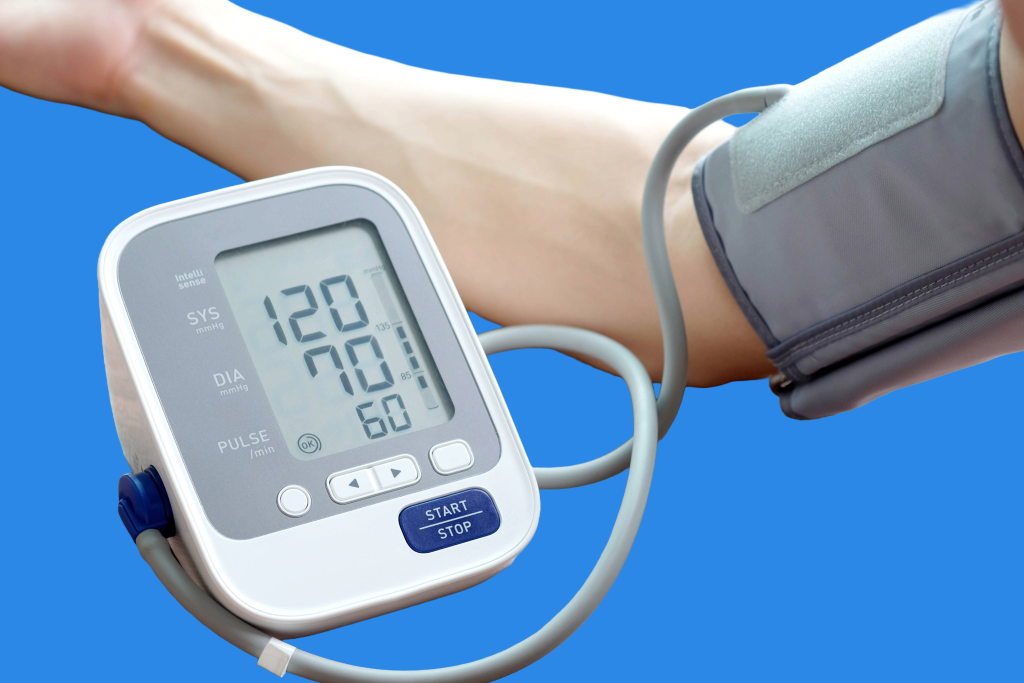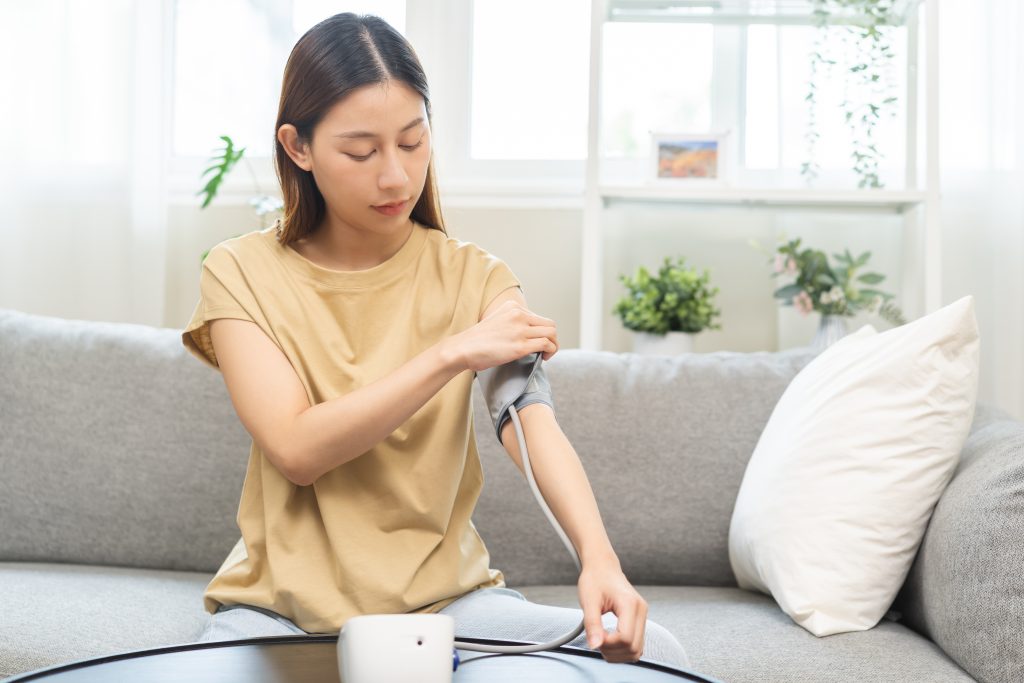See a provider online for same-day blood pressure treatment
$29 / message visit | $49 / video visit


What You Need to Do
Select Your Concern & Book
Choose your health concern (like hair loss or weight) and answer a few quick questions. Pick a time that works for you.
Meet Your Provider
Chat or video call with a licensed provider who will assess your condition and prescribe treatment if needed.
Get Your Treatment
Get care for common conditions—and if medication is needed, prescriptions can be sent directly to your pharmacy or delivered to your door (where available).
Get Ongoing Support
Stay connected with follow-up care to track progress and adjust your treatment if necessary.
What Is Hypertension (High Blood Pressure)?
Hypertension means the pressure of blood against your artery walls is consistently too high. This puts extra strain on your heart and can damage blood vessels over time. A diagnosis is usually made when your average blood pressure is over 140/90 mmHg across two or more readings.

Understanding High Blood Pressure
High blood pressure usually has no symptoms, which is why regular monitoring is key. Left untreated, it can lead to serious health problems like heart attack, stroke, kidney disease, or eye damage.
The good news: With the right mix of medication and healthy lifestyle changes, you can manage your blood pressure effectively. Your iVisitDoc provider will work with you to find the treatment that fits your health needs, though it may take time to find the best combination.
Common Medications for high blood pressure
Your iVisitDoc provider will review your symptoms and medical history to determine which (if any) dandruff treatment is right for you. If medication is prescribed, it can be sent to any pharmacy you choose for pickup or delivery.
The cost of prescribed treatments may be covered by your health insurance, depending on your plan.
Angiotensin II receptor blockers (ARBs)
• Candesartan (Atacand)
• Losartan (Cozaar)
Beta blockers
• Atenolol (Tenormin)
• Labetolol
• Metoprolol (Toprol XL, Lopressor)
• Propranolol (Inderal)
Angiotensin-converting enzyme (ACE) inhibitors
• Benazepril (Lotensin)
• Captopril (Capoten)
• Enalapril (Vasotec, Epaned)
• Lisinopril (Prinivil, Zestril)
Combination therapies
• Amlodipine-benazepril
• Lisinopril-hydrochlorothiazide (HCTZ)
• Losartan-hydrochlorothiazide (HCTZ)
Calcium channel blockers
• Amlodipine (Norvasc) • Diltiazem (Cardizem, Tiazac) • Nifedipine (Procardia)
Diuretics (water pills)
• Chlorthalidone (Thalitone) • Hydrochlorothiazide (Microzide) • Indapamide (Lozol)
Pro Tip
Start with lifestyle adjustments—like avoiding trigger foods, elevating your head while sleeping, and eating smaller meals. Medications work best when paired with healthy habits.
Quick virtual visits, anytime
Your questions answered
iVisitDoc Care & Access
Can I get diagnosed or treated for high blood pressure through Amazon One Medical Pay-per-visit?
Yes. Providers can diagnose and treat high blood pressure (hypertension) through Pay-per-visit virtual appointments. They’ll review your symptoms, history, and may recommend follow-up lab tests if needed.
Can I renew my high blood pressure prescription through Pay-per-visit?
Yes. You’ll need your current medication details and pharmacy information ready. The provider will review your history to determine if a renewal is appropriate.
Can I get lab tests like electrolyte or kidney function checks through Pay-per-visit?
Yes. If your provider recommends lab work, they can order electrolyte and kidney function tests to monitor your condition and medication safety.
Can I use my health insurance for Amazon One Medical Pay-per-visit?
No. Pay-per-visit is a self-pay service and doesn’t bill insurance. You pay a flat fee per visit using a credit or debit card.
How does Amazon One Medical protect my health information?
Amazon One Medical follows strict HIPAA privacy and security standards to protect your medical data. Your information is encrypted and only shared with your care team when necessary.
About Blood Pressure
What is a healthy blood pressure?
A normal blood pressure reading is below 120/80 mm Hg.
Elevated: 120–129 systolic and less than 80 diastolic.
High (Stage 1): 130–139 systolic or 80–89 diastolic.
High (Stage 2): 140/90 mm Hg or higher.
Persistent high readings should be discussed with a healthcare provider.
Sources: American Heart Association (AHA), Centers for Disease Control and Prevention (CDC).
What causes high blood pressure?
Common causes include genetics, excess salt intake, obesity, stress, lack of exercise, smoking, alcohol use, and chronic conditions such as kidney disease or diabetes. Sometimes, high blood pressure develops without a clear cause (essential hypertension).
Sources: Mayo Clinic, National Heart, Lung, and Blood Institute (NHLBI).
How should I take my blood pressure at home?
Use a validated automatic upper-arm cuff.
Sit quietly for 5 minutes before measuring.
Rest your arm on a flat surface at heart level.
Take two readings, 1 minute apart, and record the average.
Sources: American Heart Association (AHA) Home Monitoring Guidelines.
When and how often should I check my blood pressure?
If you’re newly diagnosed or adjusting medications, check twice daily (morning and evening) for one week. Once stabilized, measure a few times per week or as advised by your provider. Avoid measuring immediately after caffeine, smoking, or exercise.
Sources: AHA, CDC.
What lifestyle changes can help lower blood pressure?
Follow the DASH diet: rich in fruits, vegetables, whole grains, lean protein, and low-fat dairy.
Reduce salt intake to under 1,500–2,300 mg per day.
Exercise regularly (150 minutes/week).
Maintain a healthy weight, limit alcohol, and avoid smoking.
Sources: AHA, National Institutes of Health (NIH).
What are the risks of not taking high blood pressure medication?
Untreated hypertension increases your risk for heart attack, stroke, kidney damage, and vision loss. Even mild hypertension, if persistent, can cause long-term harm to blood vessels and organs.
Sources: Mayo Clinic, CDC.
